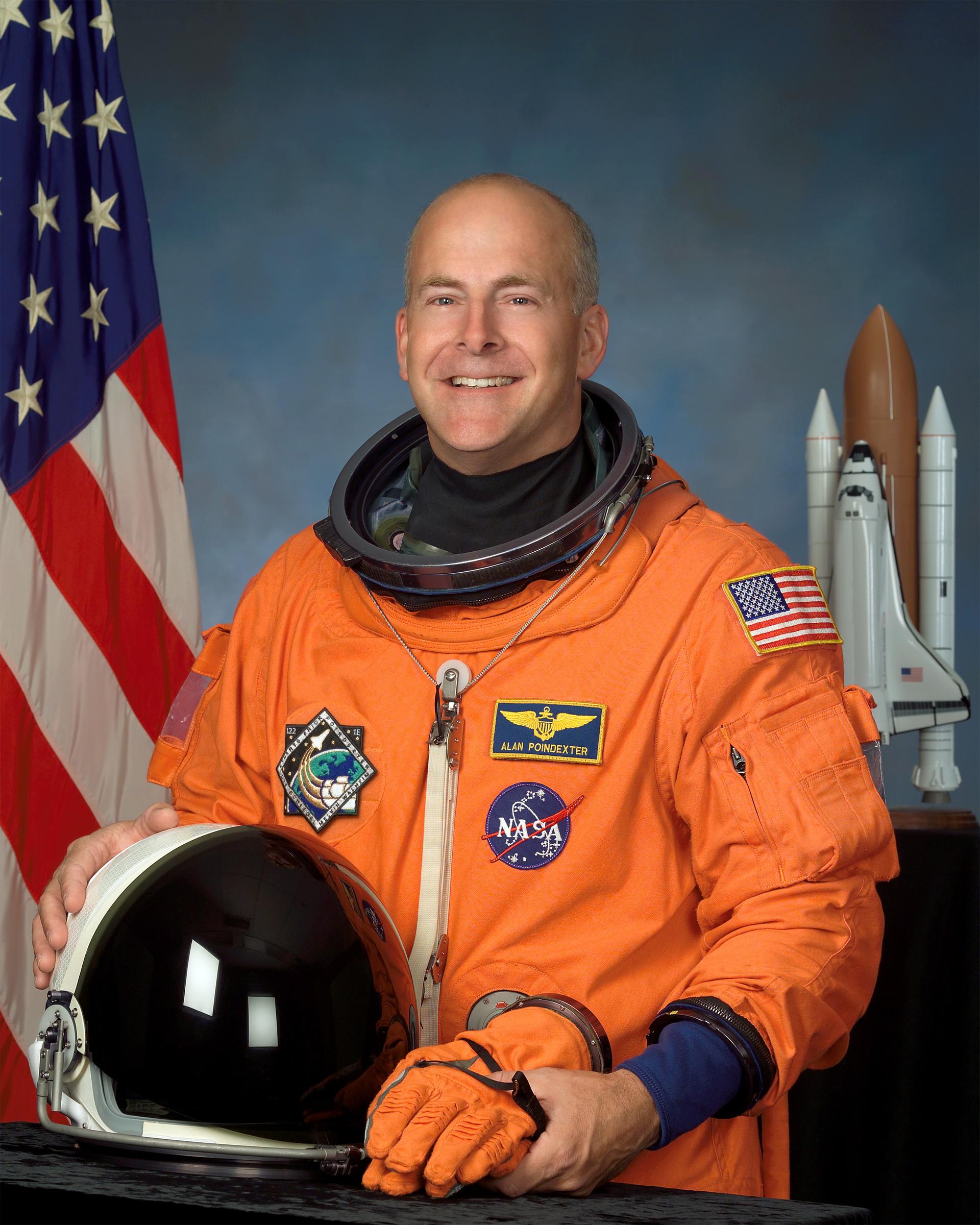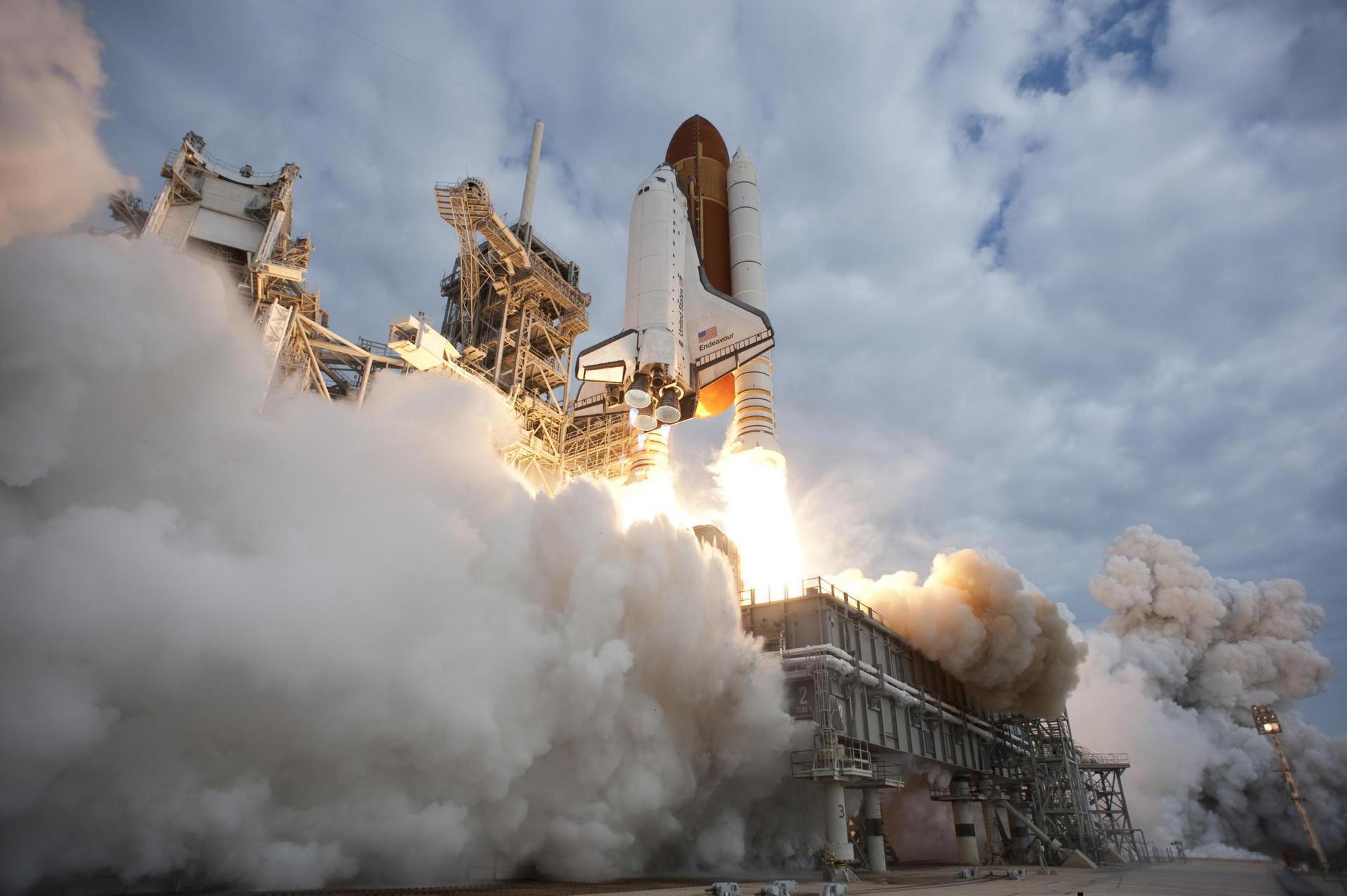Alan G. Poindexter
American - (NASA)
Deceased
Date of Birth: Nov. 5, 1961
Date of Death: July 1, 2012
Alan Goodwin "Dex" Poindexter was an American naval officer and a NASA astronaut. Poindexter was selected in the 1998 NASA Group (G17) and went into orbit aboard Space Shuttle missions STS-122, and STS-131.
Space Shuttle Atlantis / OV-104 | STS-122
National Aeronautics and Space Administration | United States of AmericaKennedy Space Center, FL, USA
Feb. 7, 2008, 7:45 p.m.
Status: Success
Mission:
STS-122 was a NASA Space Shuttle mission to the International Space Station (ISS), flown by the Space Shuttle Atlantis. STS-122 marked the 24th shuttle mission to the ISS, and the 121st space shuttle flight overall. The mission was also referred to as ISS-1E by the ISS program. The primary objective of STS-122 was to deliver the European Columbus science laboratory, built by the European Space Agency (ESA), to the station. It also returned Expedition 16 Flight Engineer Daniel M. Tani to Earth. Tani was replaced on Expedition 16 by Léopold Eyharts, a French Flight Engineer representing ESA. After Atlantis' landing, the orbiter was prepared for STS-125, the final servicing mission for the Hubble Space Telescope.
Low Earth OrbitSpace Shuttle Discovery / OV-103 | STS-131
National Aeronautics and Space Administration | United States of AmericaKennedy Space Center, FL, USA
April 5, 2010, 10:21 a.m.
Status: Success
Mission:
STS-131 was an ISS assembly flight with the primary payload being a loaded Multi-Purpose Logistics Module - Leonardo. The mission began on April 5th 2010 at 1021:22 UTC launching Commander Alan Poindexter, Pilot James Dutton, Mission Specialist 1 Richard Mastracchio, Mission Specialist 2 Dorothy M. Metcalf-Lindenburger, Mission Specialist 3 Stephanie Wilson, Mission Specialist 4 Naoko Yamazaki & Mission Specialist 5 Clayton Anderson to orbit. They docked with the ISS 2 days after launch. The mission was the final Space Shuttle launch with a seven person crew and was the longest flight for Discovery. STS-131 also marked the first time 4 women have been in space at once. During the mission 3 spacewalks were conducted to replace an ammonia tank and to retrieve a seed experiment from outside the Japanese laboratory. The mission concluded after 15 days & 2 hours on April 20th 2010 at 1308:35 UTC after 2 waved off landing opportunities on the 19th at the Kennedy Space Center.
Low Earth OrbitThe National Aeronautics and Space Administration is an independent agency of the executive branch of the United States federal government responsible for the civilian space program, as well as aeronautics and aerospace research. NASA have many launch facilities but most are inactive. The most commonly used pad will be LC-39B at Kennedy Space Center in Florida.
Long March 3B/E
Fengyun-4C
Launch Complex 2 (LC-2) - Xichang Satellite Launch Center, People's Republic of ChinaChina's geostationary meteorological satellite program FY-4 (Feng Yun 4) is the second generation of chinese geostationary meteorological satellites.
Long March 8A
SatNet LEO Group 17
Commercial LC-1 - Wenchang Space Launch Site, People's Republic of ChinaA batch of 9 Low Earth Orbit communication satellites for the Chinese state owned SatNet constellation operated by the China Satellite Network Group.…
Soyuz 2.1a
Obzor-R No.1
43/4 (43R) - Plesetsk Cosmodrome, Russian FederationNote: Assignment of payloads to this launch is uncertain. The Russian Obzor-R satellite is a planned X-band radar earth observation satellite desi…
LVM-3 (GSLV Mk III)
BlueBird Block 2 #1
Satish Dhawan Space Centre Second Launch Pad - Satish Dhawan Space Centre, IndiaAST SpaceMobile’s Block 2 BlueBird satellites are designed to deliver up to 10 times the bandwidth capacity of the BlueBird Block 1 satellites, requi…
Long March 12A
Demo Flight
Long March 12A Pad - Jiuquan Satellite Launch Center, People's Republic of ChinaFirst test launch of CASC/SAST’s Long March 12A rocket, with a dummy payload. The rocket’s 1st stage attempted to land on a landing pad about 300 km …



